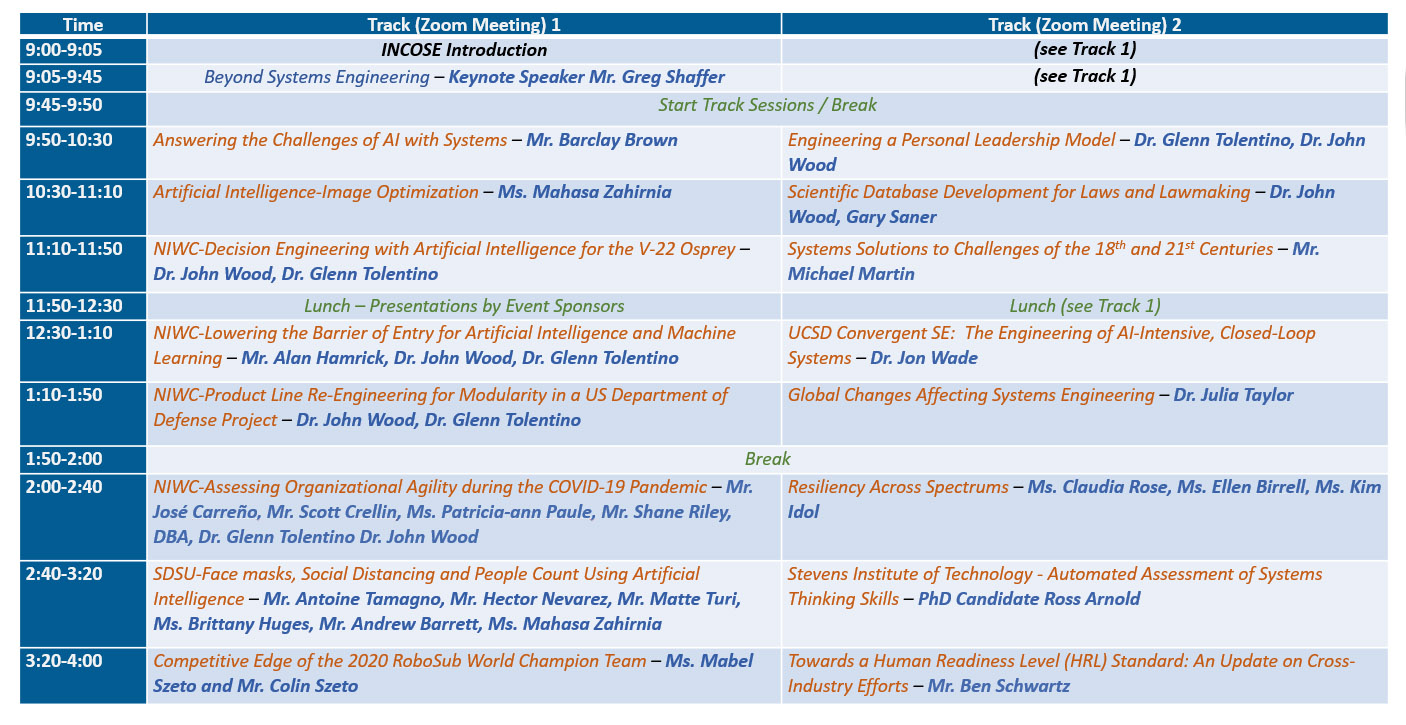
Back again for 2020, this time VIRTUAL, the INCOSE San Diego chapter will host their annual Mini-Conference on Saturday, December 5th. This year’s theme:
- Artificial Intelligence (AI)
- Global Changes
- Systems Thinking
- COVID-19
- Personal Leadership
- Lawmaking in Systems Engineering
- and More!
Please contact us with any questions at info@sdincose.org.




Key Mini-Conference Information
Date: Saturday, 5 December 2020, 9am – 4pm Pacific Time
Location: VIRTUAL/on-line
Registration: cost is $10 INCOSE Members/$20 Non-Members/$5 Students.
Webcasting Details: This webcast will use the ZOOM software and will use two separate meeting links for the two tracks. The first meeting will include the introduction and keynote in addition to its presentations – please see the schedule below.
Login information will be provided via email to registered participants, but please check back for final information as we get closer to the mini-conference.
UPDATE –
This event will comprise two ZOOM meetings, one for each track (Track 1 and Track 2).
Please log into Zoom Meeting 1 first, as the Introduction and Keynoteare in Meeting 1 only. The lunchtime presentations by our conference sponsors will also be in Meeting 1 only.
The Zoom meetings are completely independent, so you must log out of one meeting to see the other. You may also elect to log into both on different devices, e.g., using both a PC and a mobile device.
===============================================
ZOOM Meeting 1
Join Zoom Meeting:
https://incose-org.zoom.us/j/91602317894?pwd=N0VxUytLWi9zbzY1RUZEVHdEQWNtZz09
Meeting ID: 916 0231 7894
Passcode: 638320
One tap mobile
+16699006833,,91602317894#,,,,,,0#,,638320# US (San Jose)
+12532158782,,91602317894#,,,,,,0#,,638320# US (Tacoma)
Dial by your location
+1 669 900 6833 US (San Jose)
+1 253 215 8782 US (Tacoma)
+1 346 248 7799 US (Houston)
+1 312 626 6799 US (Chicago)
+1 929 205 6099 US (New York)
+1 301 715 8592 US (Washington D.C)
877 853 5257 US Toll-free
888 475 4499 US Toll-free
Meeting ID: 916 0231 7894
Passcode: 638320
Find your local number: https://incose-org.zoom.us/u/alYcNuvVI
Join by Skype for Business
https://incose-org.zoom.us/skype/91602317894
===============================================
ZOOM Meeting 2
Join Zoom Meeting
https://incose-org.zoom.us/j/96177491157?pwd=dGpweTc3cjc5Wi9LU3Y3SGhqb3BKdz09
Meeting ID: 961 7749 1157
Passcode: 192568
One tap mobile
+16699006833,,96177491157#,,,,,,0#,,192568# US (San Jose)
+13462487799,,96177491157#,,,,,,0#,,192568# US (Houston)
Dial by your location
+1 669 900 6833 US (San Jose)
+1 346 248 7799 US (Houston)
+1 253 215 8782 US (Tacoma)
+1 301 715 8592 US (Washington D.C)
+1 312 626 6799 US (Chicago)
+1 929 205 6099 US (New York)
888 475 4499 US Toll-free
877 853 5257 US Toll-free
Meeting ID: 961 7749 1157
Passcode: 192568
Find your local number: https://incose-org.zoom.us/u/abRlyfRxms
Join by Skype for Business
https://incose-org.zoom.us/skype/96177491157
===============================================
Conference Information
Schedule
Please contact us with any questions at info@sdincose.org.
Presenters
Keynote Speaker: Mr. Greg Shaffer, RecentLy-Retired Assistant Chief Engineer for the Naval Information Warfare Systems Command (NAVWAR).

Recently retiring in June 2020 after a 30-year Government career, Mr. Shaffer served as the Assistant Chief Engineer, Mission Architecture and Systems Engineering, at the Naval Information Warfare Systems Command (NAVWAR) Headquarters in San Diego, where he was responsible for establishing architecture and engineering policy and processes for C4ISR, Business/IT and Space Systems. He was the authority in the area of Systems Engineering and Systems-of-Systems Engineering. He was also the NAVWAR National Competency Lead for Intelligence, Surveillance, and Reconnaissance (ISR) and Information Operations (IO). As the NAVWAR Chief Engineer’s Deputy Warranting Officer for Mission Engineering, he was responsible for implementing and exercising technical authority in the ISR and IO domain. Previously, Mr. Shaffer served as the Assistant Chief Engineer, Mission Engineering at NAVWAR, and Senior Executive Service as the Head of the ISR and Information Operations Department at NIWC Pacific.
Mr. Shaffer began his federal career in 1990 as a software engineer in the Anti-Submarine Warfare Fire Control System program for the undersea warfare community at the Naval Ocean Systems Center, now the Naval Information Warfare Center Pacific (NIWC Pacific) in San Diego, California. He led a variety of technical projects developing innovative capabilities for the Navy, Special Operations, and the Intelligence Community. He led the technical development of several capabilities supporting National Systems. Mr. Shaffer received a Bachelor of Science in Computer Science from San Diego State University in 1988 and a Master of Science in Software Engineering from National University in 1990. He received the Navy Meritorious Civilian Service Award in 2010.
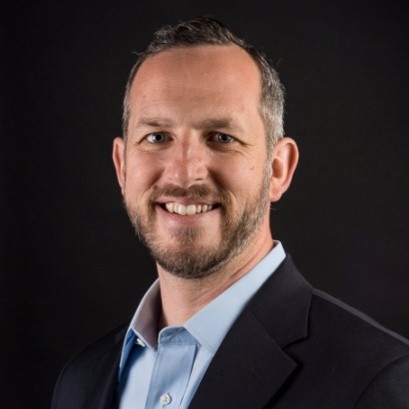 Mr. John Wood, Ph.D., is the Lead Systems Engineer for the Business and Enterprise Systems Competency at Naval Information Warfare Center Pacific. During the last two decades, he has applied his systems engineering and project management expertise to improve performance, reduce costs, and save lives in healthcare, aviation, and defense. John earned a B.S. in electrical engineering from the U.S. Naval Academy and a Ph.D. in systems engineering from the George Washington University.
Mr. John Wood, Ph.D., is the Lead Systems Engineer for the Business and Enterprise Systems Competency at Naval Information Warfare Center Pacific. During the last two decades, he has applied his systems engineering and project management expertise to improve performance, reduce costs, and save lives in healthcare, aviation, and defense. John earned a B.S. in electrical engineering from the U.S. Naval Academy and a Ph.D. in systems engineering from the George Washington University. Mr. Glenn Tolentino, Ph.D is a Senior Systems Engineer for the Business and Enterprise Information Systems Competency at NIWC Pacific. He has been an engineering practitioner, researcher, and innovator in the Command & Control and Enterprise Engineering Department throughout his career and has been credited for designing and deploying nationally recognized defense and intelligence systems in the Department of Defense. Dr. Tolentino earned a B.S. in Applied Mathematics from San Diego State University. He also holds a M.S. in Software Engineering and a Ph.D. in Computer Science from Southern Methodist University. Dr. Tolentino is a recipient of the Navy Meritorious Civilian Service Award.
Mr. Glenn Tolentino, Ph.D is a Senior Systems Engineer for the Business and Enterprise Information Systems Competency at NIWC Pacific. He has been an engineering practitioner, researcher, and innovator in the Command & Control and Enterprise Engineering Department throughout his career and has been credited for designing and deploying nationally recognized defense and intelligence systems in the Department of Defense. Dr. Tolentino earned a B.S. in Applied Mathematics from San Diego State University. He also holds a M.S. in Software Engineering and a Ph.D. in Computer Science from Southern Methodist University. Dr. Tolentino is a recipient of the Navy Meritorious Civilian Service Award.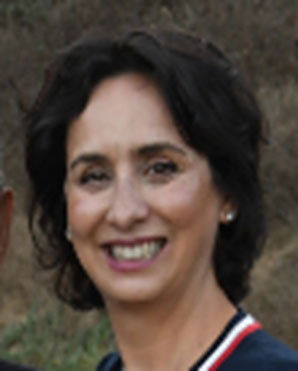 Ms. Mahasa Zahirnia stands at the forefront of the fastest moving technology industry trends: Artificial Intelligence, Metareasoning, UAV swarming and Cyber. She has spent the past five years evangelizing an industry-wide shift to the Cyber Intelligence and has helped several companies’ movement to smart technology. Mahasa has received several awards for her innovation and design from DoD and the commercial sector while embracing the core value of system engineering, integrity and innovation. Mahasa has 28 year of experience at various companies such as Northrop Grumman, Booz Allen Hamilton, Cubic, Captiva Software, Sony and Solar Turbines. She holds a Master’s degree in Leadership from University of San Diego and a Bachelor’s degree in Electrical Engineering from San Diego State University.
Ms. Mahasa Zahirnia stands at the forefront of the fastest moving technology industry trends: Artificial Intelligence, Metareasoning, UAV swarming and Cyber. She has spent the past five years evangelizing an industry-wide shift to the Cyber Intelligence and has helped several companies’ movement to smart technology. Mahasa has received several awards for her innovation and design from DoD and the commercial sector while embracing the core value of system engineering, integrity and innovation. Mahasa has 28 year of experience at various companies such as Northrop Grumman, Booz Allen Hamilton, Cubic, Captiva Software, Sony and Solar Turbines. She holds a Master’s degree in Leadership from University of San Diego and a Bachelor’s degree in Electrical Engineering from San Diego State University. Mr. Barclay R. Brown is an Engineering Fellow for Raytheon Company, focused on model based systems engineering and the application of artificial intelligence and machine learning in systems engineering. Before joining Raytheon, he was the Global Solution Executive for the Aerospace and Defense Industry at IBM, and was the lead systems engineer for some of IBM’s largest development projects. Dr. Brown has been a practitioner, consultant and speaker on systems engineering, intelligent systems and software development methods for over 25 years and holds a bachelor’s degree in Electrical Engineering, master’s degrees in Psychology and Business and a PhD in Industrial and Systems Engineering. He teaches systems engineering and systems thinking at several universities, and is a certified Expert Systems Engineering Professional (ESEP), certified Systems Engineering Quality Manager, and the former INCOSE Director for the Americas.
Mr. Barclay R. Brown is an Engineering Fellow for Raytheon Company, focused on model based systems engineering and the application of artificial intelligence and machine learning in systems engineering. Before joining Raytheon, he was the Global Solution Executive for the Aerospace and Defense Industry at IBM, and was the lead systems engineer for some of IBM’s largest development projects. Dr. Brown has been a practitioner, consultant and speaker on systems engineering, intelligent systems and software development methods for over 25 years and holds a bachelor’s degree in Electrical Engineering, master’s degrees in Psychology and Business and a PhD in Industrial and Systems Engineering. He teaches systems engineering and systems thinking at several universities, and is a certified Expert Systems Engineering Professional (ESEP), certified Systems Engineering Quality Manager, and the former INCOSE Director for the Americas.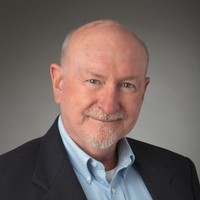 Mr. Gary Saner founded Primero Systems in 1994 with the belief that software’s limitless capabilities can be used to help businesses realize their goals – and that every company’s potential can be improved through the power of software. Under his leadership, Primero has become a trusted software development company with a loyal and varied customer base – from national retail chains to Fortune 1000 companies. Gary has been managing and developing complex systems for more than 30 years; he regularly draws upon that experience to guide Primero forward and ensure the successful completion of mission-critical software projects. As CEO, Gary shapes Primero’s unique culture and drives home the customer-centric mantra of only when a client succeeds does Primero succeed. Integrity, relationships, competence, dedication and quality are all principles that drive Gary and influence Primero’s way of doing business.
Mr. Gary Saner founded Primero Systems in 1994 with the belief that software’s limitless capabilities can be used to help businesses realize their goals – and that every company’s potential can be improved through the power of software. Under his leadership, Primero has become a trusted software development company with a loyal and varied customer base – from national retail chains to Fortune 1000 companies. Gary has been managing and developing complex systems for more than 30 years; he regularly draws upon that experience to guide Primero forward and ensure the successful completion of mission-critical software projects. As CEO, Gary shapes Primero’s unique culture and drives home the customer-centric mantra of only when a client succeeds does Primero succeed. Integrity, relationships, competence, dedication and quality are all principles that drive Gary and influence Primero’s way of doing business.
Prior to founding Primero, Gary spent 11 years with the U.S. Navy’s submarine force, which was instrumental in shaping his leadership vision. It was there that he saw first-hand the value of teamwork, camaraderie, mutual respect and accountability – attributes Gary carries with him to this day. After his service in the Navy, Gary further honed his craft at Litton Industries (now part of Northrop Grumman), where he successfully developed and implemented numerous complex software solutions for multi-billion dollar companies. Gary is a Certified Scrum Master and a strong advocate of Agile Software development methodologies.
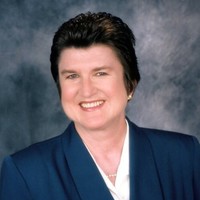 Dr. Julia Taylor. Early in her career Dr. Taylor worked in technical roles in a number of technology companies including Intel, Acurex and Buckman Laboratories. She then became interested in helping companies adapt to changing technologies and improving their approach to business. Her background includes degrees in Chemistry and Electronics, plus an MBA in business and also a doctorate degree in Strategic Management. Currently, she serves as a Director for INCOSE, the Systems Engineering organization, and also helps by serving in the San Diego County Engineering Council. She participates in IEEE and the American Chemical Society. She has written and presented a number of technical papers, as well as three business books. She currently works as a Management Consultant helping companies to diagnose problems and implement innovative new solutions.
Dr. Julia Taylor. Early in her career Dr. Taylor worked in technical roles in a number of technology companies including Intel, Acurex and Buckman Laboratories. She then became interested in helping companies adapt to changing technologies and improving their approach to business. Her background includes degrees in Chemistry and Electronics, plus an MBA in business and also a doctorate degree in Strategic Management. Currently, she serves as a Director for INCOSE, the Systems Engineering organization, and also helps by serving in the San Diego County Engineering Council. She participates in IEEE and the American Chemical Society. She has written and presented a number of technical papers, as well as three business books. She currently works as a Management Consultant helping companies to diagnose problems and implement innovative new solutions.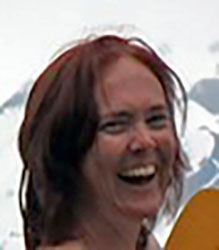 Ms. Kim Idol. As both a data technician and trainer, Ms. Idol is an expert in the modification and handling of DOORs, SLATE, CORE and Enterprise Architect among others. She provides data handling support and training to junior staff and customer staff. She also provides technical writing and editing and holds a BA and MA in Science and Education from Mount St. Mary’s College. She has presented professional papers and teaches at UNLV.
Ms. Kim Idol. As both a data technician and trainer, Ms. Idol is an expert in the modification and handling of DOORs, SLATE, CORE and Enterprise Architect among others. She provides data handling support and training to junior staff and customer staff. She also provides technical writing and editing and holds a BA and MA in Science and Education from Mount St. Mary’s College. She has presented professional papers and teaches at UNLV.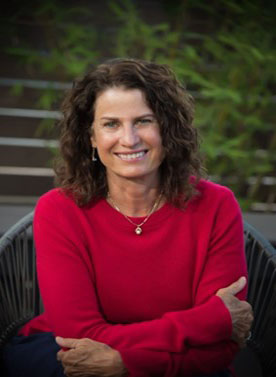 Ms. Audrey Thompson, M.S., is an international executive coach with proven success in helping business leaders identify, pursue, and achieve their professional goals. Her approach to coaching incorporates her firm belief that personal self-care is tied to business success. She is a Professional Certified Coach with coaching certifications from Well don’t ncoaches (ICF affiliate), Cooper Institute, Six Sigma, Myers Briggs Personality Inventory (MBTI) and the American College of Lifestyle Medicine. For over a decade, Audrey was responsible for designing and managing Texas’ largest statewide employee wellness program for a state agency. As a corporate change management director at a large technology company, she developed and implemented a successful factory-wide employee-driven process improvement program.
Ms. Audrey Thompson, M.S., is an international executive coach with proven success in helping business leaders identify, pursue, and achieve their professional goals. Her approach to coaching incorporates her firm belief that personal self-care is tied to business success. She is a Professional Certified Coach with coaching certifications from Well don’t ncoaches (ICF affiliate), Cooper Institute, Six Sigma, Myers Briggs Personality Inventory (MBTI) and the American College of Lifestyle Medicine. For over a decade, Audrey was responsible for designing and managing Texas’ largest statewide employee wellness program for a state agency. As a corporate change management director at a large technology company, she developed and implemented a successful factory-wide employee-driven process improvement program.
Audrey holds a BA in Psychology from the University of Texas, an MS in Organizational Leadership from Texas State University. She serves as a Master Wellness Volunteer and holds leadership positions with Austin Business Group on Health and the Austin YMCA and is a graduate of Leadership Austin and Leadership Texas.
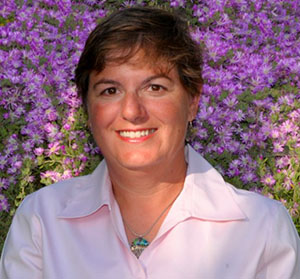 Ms. Claudia Rose is a consultant for and president of BBII, an Enterprise and Systems Engineering services company. She is a Certified Enterprise Architect with over 20 years of industry experience including Commercial, Government and Academic programs. She participates in professional associations and in the field, serving on boards of directors including (chapter president) The Association of Enterprise Architects, (past president) INCOSE San Diego, NDIA small business forum, AUVSI. She is the 2012 winner of the San Diego National Association of Women Business Owners Signature Award. She has presented papers on Enterprise and Systems Engineering at AACE, aEA,AFCEA IBM, INCOSE, NDIA and PMI events. She holds a MA (IT) from George Mason University, with studies at Tribhuvan University Kathmandu, and a B.A. from the University of Wisconsin-Madison.
Ms. Claudia Rose is a consultant for and president of BBII, an Enterprise and Systems Engineering services company. She is a Certified Enterprise Architect with over 20 years of industry experience including Commercial, Government and Academic programs. She participates in professional associations and in the field, serving on boards of directors including (chapter president) The Association of Enterprise Architects, (past president) INCOSE San Diego, NDIA small business forum, AUVSI. She is the 2012 winner of the San Diego National Association of Women Business Owners Signature Award. She has presented papers on Enterprise and Systems Engineering at AACE, aEA,AFCEA IBM, INCOSE, NDIA and PMI events. She holds a MA (IT) from George Mason University, with studies at Tribhuvan University Kathmandu, and a B.A. from the University of Wisconsin-Madison. Mr. Jon Wade, Ph.D., is a professor of practice at the Jacobs School of Engineering at the University of California at San Diego where he is currently designing transdisciplinary education and research programs oriented around the fundamental principles of contemporary closed-loop systems engineering design. Previously, Dr. Wade was a research professor in the School of Systems and Enterprises at the Stevens Institute of Technology where he also served as the chief technology officer of the Systems Engineering Research Center (SERC) UARC. His industrial experience includes serving as executive vice president of Engineering at International Game Technology (IGT), senior director of Enterprise Server Development at Sun Microsystems and director of Advanced System Development at Thinking Machines Corporation. His research interests include complex systems, future directions in systems engineering research and the use of technology in systems engineering and STEM education. Dr. Wade received his S.B., S.M., E.E. and Ph.D. degrees in electrical engineering and computer science from the Massachusetts Institute of Technology.
Mr. Jon Wade, Ph.D., is a professor of practice at the Jacobs School of Engineering at the University of California at San Diego where he is currently designing transdisciplinary education and research programs oriented around the fundamental principles of contemporary closed-loop systems engineering design. Previously, Dr. Wade was a research professor in the School of Systems and Enterprises at the Stevens Institute of Technology where he also served as the chief technology officer of the Systems Engineering Research Center (SERC) UARC. His industrial experience includes serving as executive vice president of Engineering at International Game Technology (IGT), senior director of Enterprise Server Development at Sun Microsystems and director of Advanced System Development at Thinking Machines Corporation. His research interests include complex systems, future directions in systems engineering research and the use of technology in systems engineering and STEM education. Dr. Wade received his S.B., S.M., E.E. and Ph.D. degrees in electrical engineering and computer science from the Massachusetts Institute of Technology. Mr. Michael Martin, PE, PMP, is nearing the end of his career as a technical project manager, systems engineer, and adjunct instructor. His personal investigations into the fields of science, history, and philosophy, facilitated by a long commute and an iPod, have led him to the study of chaos and complexity theory as the gateway to a new understanding of the possibilities and limitations driving human systems. He plans to continue to highlight application of the tools of systems thinking and the sciences to public policy and governance in future publications.
Mr. Michael Martin, PE, PMP, is nearing the end of his career as a technical project manager, systems engineer, and adjunct instructor. His personal investigations into the fields of science, history, and philosophy, facilitated by a long commute and an iPod, have led him to the study of chaos and complexity theory as the gateway to a new understanding of the possibilities and limitations driving human systems. He plans to continue to highlight application of the tools of systems thinking and the sciences to public policy and governance in future publications. Mr. Ross Arnold has been a software and systems engineer for the United States Department of Defense for over 18 years. He currently serves as a Senior Research Engineer at the U.S. Army Combat Capabilities Development Command Armaments Center, where his research focuses on artificial intelligence, autonomous systems, and swarm algorithms. Previously, Mr. Arnold worked as a Visiting Research Scientist for the United States Military Academy at West Point. Before his time at West Point, Mr. Arnold worked as Senior Research Engineer at the Japan Air Systems Research Center in Tokyo, where he led cooperative research efforts between the United States Department of Defense and the Japan Ministry of Defense in the area of autonomous aerial systems. Mr. Arnold has also spent many years as Chief Engineer and Software Lead for a variety of defense systems. Mr. Arnold holds a Bachelor of Science in Computer Science, a Master of Science in Software Engineering, and is nearing completion of a PhD in Systems Engineering.
Mr. Ross Arnold has been a software and systems engineer for the United States Department of Defense for over 18 years. He currently serves as a Senior Research Engineer at the U.S. Army Combat Capabilities Development Command Armaments Center, where his research focuses on artificial intelligence, autonomous systems, and swarm algorithms. Previously, Mr. Arnold worked as a Visiting Research Scientist for the United States Military Academy at West Point. Before his time at West Point, Mr. Arnold worked as Senior Research Engineer at the Japan Air Systems Research Center in Tokyo, where he led cooperative research efforts between the United States Department of Defense and the Japan Ministry of Defense in the area of autonomous aerial systems. Mr. Arnold has also spent many years as Chief Engineer and Software Lead for a variety of defense systems. Mr. Arnold holds a Bachelor of Science in Computer Science, a Master of Science in Software Engineering, and is nearing completion of a PhD in Systems Engineering.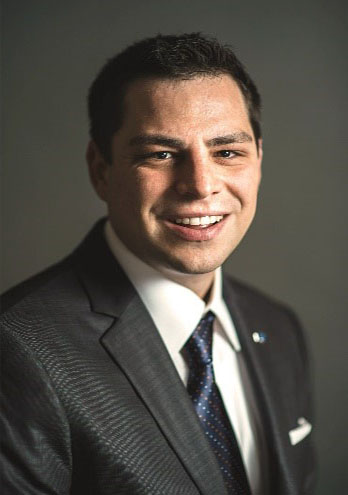 Mr. Ben Schwartz is an INCOSE CSEP and a systems engineer at Northrop Grumman. He is involved with efforts to mature the practice of human systems integration (HSI) in large system acquisitions, including contributing to the SE Body of Knowledge (SEBOK) site. He received a bachelor’s degree in engineering psychology from Tufts University in Medford, MA and a master’s degree in human systems integration (HSI) from the Naval Postgraduate School (NPS) in Monterey, CA.
Mr. Ben Schwartz is an INCOSE CSEP and a systems engineer at Northrop Grumman. He is involved with efforts to mature the practice of human systems integration (HSI) in large system acquisitions, including contributing to the SE Body of Knowledge (SEBOK) site. He received a bachelor’s degree in engineering psychology from Tufts University in Medford, MA and a master’s degree in human systems integration (HSI) from the Naval Postgraduate School (NPS) in Monterey, CA.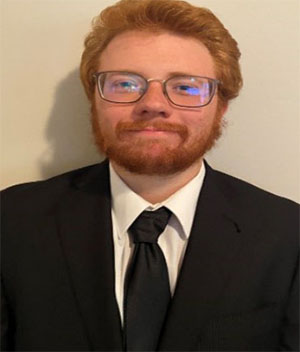 Mr. Antoine Tamagno is earning a Bachelor of Sciences in Computer Science from San Diego State University and will be graduating in the spring of 2021 as the president of the SDSU AI Club. He is also pursuing a minor in Geology as he has a deep founded interest in protecting the environment. As a member of the college of science’s dean’s list, he has demonstrated a constant drive to do better and achieve outstanding grades. In addition, Antoine has worked as a sportswriter and social media manager covering the San Jose Earthquakes.
Mr. Antoine Tamagno is earning a Bachelor of Sciences in Computer Science from San Diego State University and will be graduating in the spring of 2021 as the president of the SDSU AI Club. He is also pursuing a minor in Geology as he has a deep founded interest in protecting the environment. As a member of the college of science’s dean’s list, he has demonstrated a constant drive to do better and achieve outstanding grades. In addition, Antoine has worked as a sportswriter and social media manager covering the San Jose Earthquakes.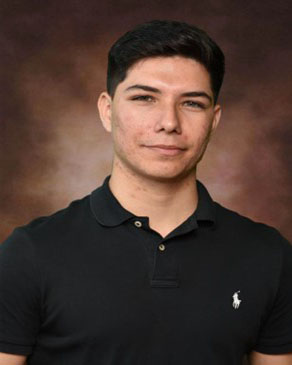 Mr. Hector Nevarez is studying for his bachelor of science in computer science from San Diego State University. He is also pursuing a minor in statistics because he enjoys trying to analyze and understand data. He will be graduating Fall 2022 and then hopes to attend graduate school to obtain a masters in computer science. Hector is fascinated by artificial intelligence and he is aiming to pursue a career in the field.
Mr. Hector Nevarez is studying for his bachelor of science in computer science from San Diego State University. He is also pursuing a minor in statistics because he enjoys trying to analyze and understand data. He will be graduating Fall 2022 and then hopes to attend graduate school to obtain a masters in computer science. Hector is fascinated by artificial intelligence and he is aiming to pursue a career in the field. Ms. Brittany Hughes is currently earning a Bachelor of Sciences in Computer Science from San Diego State University. She is also pursuing a Bachelors of Arts in Art with an emphasis in Painting and Printmaking. As an office in two clubs she demonstrates a desire to expand her leadership skills.
Ms. Brittany Hughes is currently earning a Bachelor of Sciences in Computer Science from San Diego State University. She is also pursuing a Bachelors of Arts in Art with an emphasis in Painting and Printmaking. As an office in two clubs she demonstrates a desire to expand her leadership skills.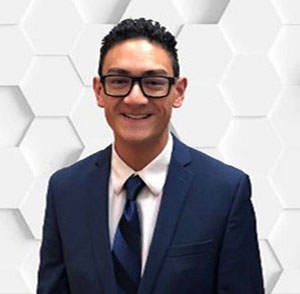 Mr. Andrew Barrett is a fourth year student at San Diego State University who is currently pursuing a Bachelors of Science in Computer Science. He has made the Dean’s list every semester he has attended SDSU. He is currently serving as the Vice President of the SDSU Artificial Intelligence Club and Vice President of Scholarship for Phi Delta Theta Fraternity. He is also pursuing a minor in Communications because of his interest with integrating technology into daily life in a way which feels unobtrusive and intuitive.
Mr. Andrew Barrett is a fourth year student at San Diego State University who is currently pursuing a Bachelors of Science in Computer Science. He has made the Dean’s list every semester he has attended SDSU. He is currently serving as the Vice President of the SDSU Artificial Intelligence Club and Vice President of Scholarship for Phi Delta Theta Fraternity. He is also pursuing a minor in Communications because of his interest with integrating technology into daily life in a way which feels unobtrusive and intuitive. Mr. Matthew Turi is working towards a Bachelor of Sciences in Computer Science at San Diego State University and will be graduating in the Fall of 2021. He has made the dean’s list every semester thus far and is striving to keep this title until he graduates. Outside of the classroom, he is the treasurer for the Ai club and hopes to continue learning and working in the realm of artificial intelligence.
Mr. Matthew Turi is working towards a Bachelor of Sciences in Computer Science at San Diego State University and will be graduating in the Fall of 2021. He has made the dean’s list every semester thus far and is striving to keep this title until he graduates. Outside of the classroom, he is the treasurer for the Ai club and hopes to continue learning and working in the realm of artificial intelligence. Ms. Mabel Szeto is a 2019 RoboSub Team Captain, FIRST Tech Challenge Team Captain, FIRST robotics youth mentor, robotics instructor, robotics event organizer, and robot game designer. She is also a Northrop Grumman High School Technical Intern.
Ms. Mabel Szeto is a 2019 RoboSub Team Captain, FIRST Tech Challenge Team Captain, FIRST robotics youth mentor, robotics instructor, robotics event organizer, and robot game designer. She is also a Northrop Grumman High School Technical Intern.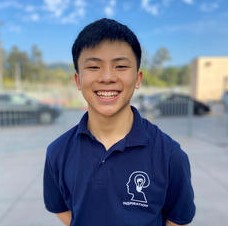 Mr. Colin Szeto is a 2020 RoboSub Team Captain, FIRST Tech Challenge Team Captain, FIRST robotics youth mentor, robotics instructor, and robotics event organizer. INCOSE speaker. He is also a Northrop Grumman High School Technical Intern.
Mr. Colin Szeto is a 2020 RoboSub Team Captain, FIRST Tech Challenge Team Captain, FIRST robotics youth mentor, robotics instructor, and robotics event organizer. INCOSE speaker. He is also a Northrop Grumman High School Technical Intern.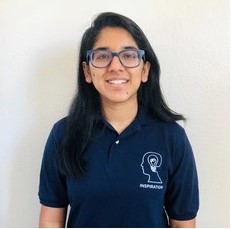 Ms. Ashiria Goel is a 2021 Robosub Team Captain, 2020 RoboSub Deputy Captain, FIRST Tech Challenge Deputy Captain, and robotics instructor.
Ms. Ashiria Goel is a 2021 Robosub Team Captain, 2020 RoboSub Deputy Captain, FIRST Tech Challenge Deputy Captain, and robotics instructor.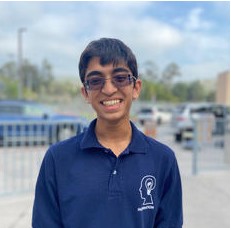 Mr. Rishi Veerepalli is a 2021 RoboSub Deputy Captain, 2020 RoboSub Software Architect, FIRST Tech Challenge Programming Lead, and robotics instructor.
Mr. Rishi Veerepalli is a 2021 RoboSub Deputy Captain, 2020 RoboSub Software Architect, FIRST Tech Challenge Programming Lead, and robotics instructor.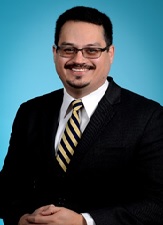 Mr. José Carreño serves as a senior analyst and advisor to the Head of the C2E2 Department of NIWC Pacific. Previously he served as head of the Strategy and Decision Support Branch, developing and leading the team responsible for delivering strategic assessments, planning, research, and analytics to the senior leadership of NIWC Pacific. Mr. Carreño completed his undergraduate studies at the University of California, Berkeley, and holds Masters Degrees from the University of California, San Diego and from the Naval Postgraduate School. He is a recipient of the Navy Meritorious Civilian Service Award.
Mr. José Carreño serves as a senior analyst and advisor to the Head of the C2E2 Department of NIWC Pacific. Previously he served as head of the Strategy and Decision Support Branch, developing and leading the team responsible for delivering strategic assessments, planning, research, and analytics to the senior leadership of NIWC Pacific. Mr. Carreño completed his undergraduate studies at the University of California, Berkeley, and holds Masters Degrees from the University of California, San Diego and from the Naval Postgraduate School. He is a recipient of the Navy Meritorious Civilian Service Award.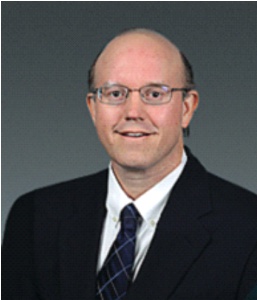 Mr. Scott Crellin is the head of the Command & Control and Enterprise Engineering (C2E2) Department of Naval Information Warfare Center (NIWC) Pacific. His previous roles at NIWC Pacific include serving as Deputy Department Head of the C2E2 Department, and as head of Corporate Strategy. Before transitioning to NIWC Pacific, Mr. Crellin served in multiple engineering roles at NIWC Atlantic, to include head of the Engineering Support Facility and as chief of operations for the C2 Systems Department. Mr. Crellin holds a Master’s in Business Administration from the University of South Carolina, and a Bachelors in Industrial and Operations Engineering from the University of Michigan. He has completed both the Harvard Kennedy School of Government’s Senior Executive Fellows program and the Federal Executive Institute’s Leadership for a Democratic Society program, and is a recipient of the Navy Meritorious Civilian Service Award.
Mr. Scott Crellin is the head of the Command & Control and Enterprise Engineering (C2E2) Department of Naval Information Warfare Center (NIWC) Pacific. His previous roles at NIWC Pacific include serving as Deputy Department Head of the C2E2 Department, and as head of Corporate Strategy. Before transitioning to NIWC Pacific, Mr. Crellin served in multiple engineering roles at NIWC Atlantic, to include head of the Engineering Support Facility and as chief of operations for the C2 Systems Department. Mr. Crellin holds a Master’s in Business Administration from the University of South Carolina, and a Bachelors in Industrial and Operations Engineering from the University of Michigan. He has completed both the Harvard Kennedy School of Government’s Senior Executive Fellows program and the Federal Executive Institute’s Leadership for a Democratic Society program, and is a recipient of the Navy Meritorious Civilian Service Award.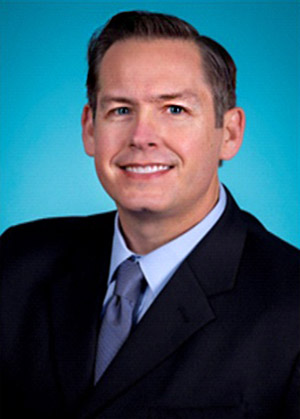 Mr. Shane Riley, PhD, is the Deputy for Operations of the Business and Enterprise Information Systems Competency at NIWC Pacific. He has a Doctorate in Business Administration with a specialization in Public Administration, as well as a B.A. and M.A. in International Relations and Political Science. Dr. Riley has extensive professional experience working in the private and public sectors; domestic and international. Dr. Riley specializes in strategic management, data science, enterprise resource planning (ERP), business intelligence, political science, and international affairs.
Mr. Shane Riley, PhD, is the Deputy for Operations of the Business and Enterprise Information Systems Competency at NIWC Pacific. He has a Doctorate in Business Administration with a specialization in Public Administration, as well as a B.A. and M.A. in International Relations and Political Science. Dr. Riley has extensive professional experience working in the private and public sectors; domestic and international. Dr. Riley specializes in strategic management, data science, enterprise resource planning (ERP), business intelligence, political science, and international affairs.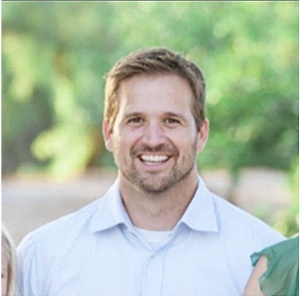 Mr. Alan Hamrick has over 20 years of experience in the field of Information Technology and is currently working as a Scientist with the Naval Information Warfare Center (NIWC) Pacific. Prior to working at NIWC Pacific Mr. Hamrick was an Associate with Booz Allen Hamilton and Senior Principal Consultant with Oracle Corporation. He holds a Bachler’s of Science in Computer Science from the University of Pittsburgh and a Master Degree in Business Administration from the University of California, Irvine. He is a Certified Information Systems Security Professional, an AWS Certified Solutions Architect, a Certified Enterprise Java Developer, and a Certified SAFe Scrum Master. Mr. Hamrick specializes in native cloud solutions and custom, containerized, application development. He has experience in fielding accredited, secure IT solutions in multiple on-premise and cloud environments.
Mr. Alan Hamrick has over 20 years of experience in the field of Information Technology and is currently working as a Scientist with the Naval Information Warfare Center (NIWC) Pacific. Prior to working at NIWC Pacific Mr. Hamrick was an Associate with Booz Allen Hamilton and Senior Principal Consultant with Oracle Corporation. He holds a Bachler’s of Science in Computer Science from the University of Pittsburgh and a Master Degree in Business Administration from the University of California, Irvine. He is a Certified Information Systems Security Professional, an AWS Certified Solutions Architect, a Certified Enterprise Java Developer, and a Certified SAFe Scrum Master. Mr. Hamrick specializes in native cloud solutions and custom, containerized, application development. He has experience in fielding accredited, secure IT solutions in multiple on-premise and cloud environments.Please contact us with any questions at info@sdincose.org.
Register Here!
Presentation Abstracts
Beyond Systems Engineering
Presenter: Mr. Greg Shaffer
Abstract: DevSecOps, Model Based Systems Engineering, Agile Development, Automatic Test and Retest, all are engineering principles or processes that focus on individual aspects of developing a system. As hardware capacity growth continue to expand at a linear rate, our “systems” engineering processes have not! We are still engineering systems the same old way! While Model Based Systems Engineering gives us the opportunity to truly integrate multiple disciplines (3D Modeling, Digital Twins, etc) together to better understand the “system-of-systems”, but is an engineering community our overarching approach and thought processes have not undergone the same fundamental growth. These same advances in hardware give us the opportunity to fundamentally change the way we build capabilities based on data, machine learning and artificial intelligence.
Answering the Challenges of AI with System Engineering
Presenter: Barclay Brown
Abstract: AI technologies like machine learning and deep neural networks hold great promise for improving, even revolutionizing many application areas and domains. Curiously, experts in AI and casual observers line up on both sides of the “are the benefits worth the risks?” question. Several books from prominent AI researchers paint dire scenarios of AI systems run amok, escaping the control of their human creators and managers, pursuing their “own” agendas to our detriment. At the same time, AI research races ahead, developing new capabilities and far surpassing the performance of past systems and even humans—so how can we resist these advancements and the benefits they bring, even though there may be risks?
The way out of the dilemma is the application of systems engineering. Systems engineers have been addressing the issues of dangerous technologies for decades. Nuclear fission, like AI, is an inherently dangerous technology. Systems engineers can’t make fission safer, so instead they build systems around the fission reaction, making the entire system as safe as possible. If a system fails, the fault is not with fission, but with the design or implementation of the system.
This presentation surveys some of the main challenges in the development of intelligent systems—systems that include one or more AI-based components to produce intelligent behavior—including reliability, safety, dependability, explainability and susceptibility to interference or hacking. Some recent AI failures will be used as case studies to highlight how systems engineering methods and techniques could be used or adapted to solve AI challenges.
Artificial Intelligence-Image Optimization
Presenter: Mahasa Zahirnia
Abstract: The purpose of this presentation is to explore new and effective ways of optimizing satellite images using Artificial Intelligence, and the process of implementing Reinforcement Learning to enhance the quality of data captured within the image. Results show that within a simulated environment, built on the images that are commercially available, the rate of detection was improved by 40-90%. With the utilization of infamous Q-learning and the art of neural networks we can see how AI can become the new standard for image optimization.
NIWC-Decision Engineering with Artificial Intelligence for the V-22 Osprey
Presenter: Dr. John Wood Co-Author: Dr. Glenn Tolentino
Abstract: Over the years, the use of data throughout the V-22 Osprey program steadily grew. Initially, automated software analyzed flight data to inform maintenance decisions. A few years later, analysts mined maintenance data to inform program-level decisions. Then, a few years after that, analysts leveraged artificial intelligence and machine learning to gain insights on aircraft readiness by fusing dozens of different data sets related to the V-22. While each aspect was successful, their roadmaps and growth plans were independent until now. This presentation describes the new decision support strategy and corresponding technological capabilities that will unite these formerly separate initiatives.
NIWC-Lowering the Barrier of Entry for Artificial Intelligence and Machine Learning
Presenter: Alan Hamrick Co-Authors: Dr. John Wood & Dr. Glenn Tolentino
Abstract: The Business and Enterprise Systems Competency at the Naval Information Warfare Center Pacific successfully created artificial intelligence and machine learning environments that support aviation platforms including the V-22 Osprey and F/A-18 Super Hornet. Building on the knowledge gained through those efforts, they recently engineered a new Cloud-based Data Analytics Cell (C-DAC) that other projects can leverage to rapidly stand up an analytics environment and apply artificial intelligence and machine learning to their unique data sets. In doing so, the Business and Enterprise Systems Competency hopes more of its projects will exploit the power of “Big Data” to improve the products and services they provide to the US Navy.
NIWC-Product Line Re-Engineering for Modularity in a US Department of Defense Project
Presenter: Dr. John Wood Co-Author: Dr. Glenn Tolentino
Abstract: This presentation details the options evaluated and path eventually chosen by a DoD software project to re-engineer four existing products with common features into a single product-line with the goal of reducing total life cycle costs. The re-engineering options evaluated were merging common code and maintaining it in a single repository, re-using software code while keeping it in separate repositories for each product variant, and pursing a Modular Open Systems Approach (MOSA) to create common modules that could be incorporated within any product variant whenever the corresponding sponsor directed. With the support of product sponsors, the DoD project decided to pursue a hybrid approach of immediate code re-use complemented with an agile approach to MOSA implementation.
NIWC-Assessing Organizational Agility during the COVID-19 Pandemic
Presenter: José Carreño Co-Authors: Scott Crellin; Patricia-ann Paule; Shane Riley, DBA; Dr. Glenn Tolentino, Dr. John Wood
Abstract: In their work Power to the Edge, Drs. Alberts and Hayes declare agility is “one of the most important characteristics of successful Information Age organizations.” This presentation will examine NIWC Pacific’s Command and Control Enterprise Engineering Department’s organizational agility as it adapted to distributed operations during the COVID-19 pandemic. Specifically, it will examine this experience through the prism of the six dimensions of organizational agility: robustness, resilience, responsiveness, flexibility, innovation, and adaptation. Through this presentation, the authors hope other entities will gain a point of comparison by which to assess their respective responses to the recent COVID-19 pandemic and inform their response plans in preparation for future emergencies.
SDSU-Face masks, Social Distancing and People Count Using Artificial Intelligence
Presenter: Antoine Tamagno, Hector Nevarez, Matte Turi, Brittany Huges, Andrew Barrett, Mahasa Zahirnia
Abstract: While the world is racing to find a cure for the recent COVID-19 pandemic, containing the novel virus is proving to be difficult, evident by the many nations that are struggling to slow the spread.
The goal of this study is to provide a platform that will help in the efforts to control the spread of the novel coronavirus. To achieve this, we will use cameras that monitor different locations, taking into account two main factors: whether or not people are wearing a face mask and if they are properly social distancing. This information will be relayed to a web-application that provides insight into the overall risk of a given area based on CDC guidelines.
To determine if a face mask is worn, a pre-trained model will access the camera’s feed and isolate each person’s head. With this information, the model will classify a given person as either properly wearing a face mask or not wearing a facemask. In the case that a person’s head is turned away from the camera, the face mask detection model will classify a person as unknown until a better angle is obtained. To identify if people are social distancing, a separate model will detect unique persons from the feed and determine the distance between them. If anyone in the frame is less than six feet apart, they will be flagged as not following guidelines.
This information will then be pushed through an algorithm which will classify the total risk of the given area. The weights of each offense will be adherent to the CDC’s policies and thus accurately depict the risk of COVID-19 transmission at a location. The calculated risk will then be displayed on a web application, allowing users to make informed decisions relating to their safety.
Competitive Edge of the 2020 RoboSub World Champion Team
Presenter: Mabel Szeto and Colin Szeto
Abstract: Team Inspiration competed in an autonomous underwater robotics competition in which school/university teams, and their faculty, industrial partners, or government partners, create systems used in the real world for underwater exploration, seafloor mapping, and sonar localization, amongst many other tasks. COVID-19 forced teams to work virtually, bringing on many unprecedented challenges for each team. This paper explores how Team Inspiration adapted systems engineering processes and digital technology to this new environment. These processes enabled Team Inspiration to take 1st place overall and sweep all categories at the 2020 RoboSub competition, outperforming all universities including Caltech and Carnegie Mellon. Furthermore, Team Inspiration became the first middle and high school team that ever won the world title in RoboSub’s 23 years of history.
NIWC-Engineering a Personal Leadership Model
Presenter: Dr. Glenn Tolentino, Co-Author: Dr. John Wood
Abstract: A number of leadership theories and models exist that cover effectively leading a group of people while pursuing a goal for particular situations. The common practice is to identify an existing leadership model and apply the associated leadership behaviors that are applicable to that specific environment or situation. While this may be practical in many circumstances, another approach is to engineer a leadership model based on one’s personal leadership philosophy and values. In engineering a personal leadership model, the goal is to develop a system of leadership that a person can effectively operate and sustain throughout his or her career.
Scientific Database Development for Laws and Lawmaking
Presenter: Dr. John Wood, Co-Author: Gary Saner
Abstract: While no cohesive effort currently exists to scientifically study laws and lawmaking, independent investigators have been performing and publishing scientific studies on these subjects. These studies have been published in a variety of scientific journals, including economic, medical, engineering, and sociology journals. Since this body of knowledge is spread throughout such a wide array of publications, the Science of Laws Institute is creating a single comprehensive database to house these scientific studies. This new database will facilitate easier access to these studies by providing researchers a single site where they can view scientific literature relating to the subjects of laws and lawmaking. This presentation will discuss the design process used to create this powerful new database and the overall benefit we hope these efforts will provide to those interested in transforming lawmaking into a science-based endeavor.
Systems Solutions to Challenges of the 18th and 21st Centuries
Presenter: Michael Martin
Abstract: Peter Senge summarizes systems thinking succinctly as “seeing through the detail complexity to the underlying structures generating change.” While many likely view systems thinking as a late 20th century concept developed to address the complexity in applications of modern technology, this presentation will highlight the systems thinking underlying the 18th century American founding documents. Understanding the world as a system was the basis for Isaac Newton’s Principia Mathematica published in the late 17th century, and a goal of the subsequent Enlightenment thinkers was to define a scientific approach to translate Newton’s system-of-the-world vision to human activities. Following the initial successes of the American founding, that goal has largely faltered in a wake of misapplication and unrealistic quantification. The author believes the path to reignite that pursuit lies in the axioms of chaos and complexity theory to bound rational and durable systems of law and governance, and to identify the excesses that lead to societal failure.
UCSD Convergent SE: The Engineering of AI-Intensive, Closed-Loop Systems
Presenter: Dr. Jon Wade
Abstract: We have entered an era of great system complexity, rapid technological change, growing resource stress, and evolving societal systems that are both enabled and impacted by the digital transformation with its advances in artificial intelligence, machine learning and data science. Consideration for the system as an evolving enterprise must be a core part of systems engineering. There is an increasing call from all systems stakeholders for foundational tools that reflect the human, organizational, and societal aspects of engineered systems. In particular, the growing complexity of systems and their evolving, emerging behaviors require that systems engineers often need to take the role of systems scientists as well as engineers to ensure that both the system they are creating and the systems that are responsible for their creation are interconnected and aligned. This talk will present the UCSD Convergent Systems Engineering program which is being created to both develop the systems engineering approaches and methods to address these needs, and provide the educational program for its instruction.
Global Changes Affecting Systems Engineering
Presenter Dr. Julia Taylor
Abstract: Systems Engineers can up their game by paying attention to new technology trends, breakthroughs in technology and taking advantage of new opportunities to increase their work effectiveness. Never before have we been on the cusp of implementing so many cutting edge breakthrough technologies that can dramatically improve systems. This presentation will get you to start thinking about how your organization can take advantage of these new offerings.
Resiliency Across Spectrums
Presenter: Claudia Rose, Ellen Birrell, Kim Idol
Abstract: Now is a time of crisis and a recognizable pivot point in terms of effecting critical changes. Enterprises and stakeholders, as they adapt to the new economic, psychological and social “normal” need to use this opportunity to capture the frameworks and frame the new value systems that will now drive individual behaviors and shape reward systems. These changes include amending corporate value systems which will then need to be introduced to the workforce. This paper will focus on how to train workforce resiliency so that individuals and teams can create more flexible designs in systems engineering. This presentation introduces these new systems engineering possibilities, discusses the problems and suggests the new paradigms that can help further these goals.
Automated Assessment of Systems Thinking Skills
Presenter: PhD Candidate Ross Arnold
Abstract: This talk discusses a novel assessment method for Systems Thinking competencies implemented as a software simulation tool. The assessment method was tested with a group of beta-testers and then implemented on several groups of test subjects, including mixed professionals from a variety of educational and career backgrounds. Results of the assessment show success at evaluating complex facets of Systems Thinking that have eluded assessment in prior methods. In particular, the tool shows promise at evaluating the Structure and Behavior domains of Systems Thinking as well as the ways in which systemic leverage points are used by experts. Additionally, the tool was successful at discovering new insights into the ways in which expert Systems Thinkers approach and interact with digital systems as compared with non-experts.
Towards a Human Readiness Level (HRL) Standard: An Update on Cross-Industry Efforts
Presenter: Ben Schwartz
Abstract: A government-industry-academia working group is preparing to publish a Human Readiness Level (HRL) scale. This presentation will share the history of the HRL (in context of the well-known TRL and other similar scales), describe the current state of the scale and associated materials, and share how programs can leverage this tool to improve ultimate system effectiveness. Three practical benefits to utilizing the HRL in system development programs: (1) it is a useful tool for identifying gaps and shortcomings related to HFE and HSI (reduces risk/ensures system success); (2) it helps integrators communicate HSI status to program leadership at a high-level using the already-familiar readiness level format; (3) for government programs, it ensures compliance with acquisition regulations for HSI.
Please contact us with any questions at info@sdincose.org.




